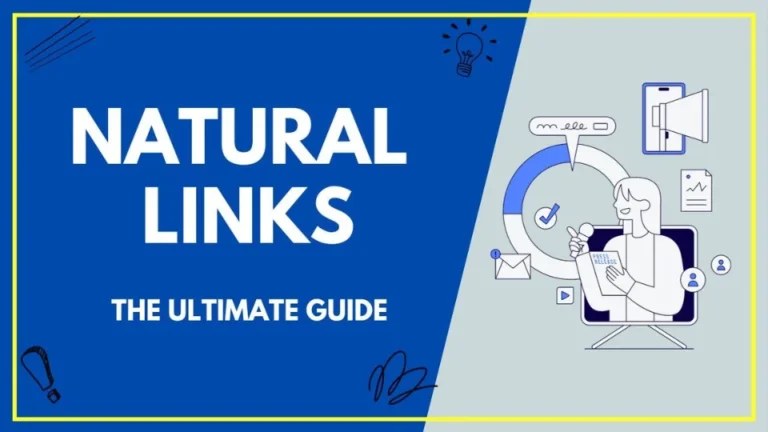How to Get Links from Guest Posts That Won’t Get You Fired
Guest posting is a powerful strategy for building backlinks, improving SEO, and boosting brand authority. But doing it wrong—especially in ways that raise red flags with Google or your boss—can have serious consequences. If you’re looking to get links from guest posts that won’t get you fired, it’s essential to approach guest posting with strategy, integrity, and professionalism.
In this guide, we’ll break down how to secure safe, effective guest post links, highlight common pitfalls, and offer expert tips to stay in your boss’s good graces while growing your site’s authority.
Why Guest Post Links Matter

Guest posting involves writing and publishing articles on another website to gain backlinks to your own site. These backlinks help:
- Improve search engine rankings
- Drive referral traffic
- Build authority in your niche
- Expand your brand reach
However, not all guest post links are created equal. Poor-quality links or spammy practices can hurt your SEO—and possibly get you in serious trouble at work.
The Right Way to Get Links from Guest Posts

To ensure your guest posting efforts are professional and risk-free, follow these key steps:
1. Choose High-Quality Sites

Before pitching a guest post, evaluate the target website carefully. Look for:
- Strong domain authority (DA of 40+ is a good benchmark)
- Relevant content related to your niche
- Real traffic (not just artificially inflated)
- Engaged audience (comments, shares, social media presence)
- Clean backlink profile (avoid sites that link to spammy content)
If a site looks shady, skip it. It’s not worth the risk.
2. Focus on Relevance Over Quantity
More links aren’t always better. Relevance is critical. A single link from a highly relevant site can outperform dozens of random links.
Make sure:
- The site’s audience matches your target demographic
- The article topic naturally fits their usual content
- Your backlink feels organic and helpful to readers
3. Craft Genuine, Value-Driven Content
Never write posts just to sneak in a link. Editors and readers can tell.
Good guest posts should:
- Provide real value and insights
- Match the site’s tone and style
- Avoid being overly promotional
- Link only where it adds genuine context
When you deliver great content, your links feel natural—and nobody gets upset.
4. Follow Editorial Guidelines Strictly
Ignoring editorial guidelines is a fast way to get your submission rejected—or worse, tarnish your professional reputation.
Key tips:
- Read and understand the site’s guidelines before pitching
- Submit articles formatted correctly
- Avoid keyword stuffing or unnatural anchor text
- Respect any nofollow policies if requested
Following the rules shows respect and professionalism, which goes a long way.
Safe Guest Post Link Building vs. Risky Tactics (Comparison Table)
| Feature | Safe Guest Posting | Risky Guest Posting |
|---|---|---|
| Site Quality | High authority, real traffic | Low authority, PBNs, spam sites |
| Content Focus | Value-driven, audience-focused | Link-stuffed, self-promotional |
| Editorial Process | Professional, thorough | Quick, sloppy, no guidelines |
| Link Placement | Natural and relevant | Forced, in irrelevant content |
| Long-Term Impact | Improved rankings, brand trust | Potential Google penalties, loss of credibility |
Pros and Cons of Guest Post Link Building
Pros
- Boosts SEO performance when done properly
- Builds brand authority in your industry
- Expands your network of professionals and websites
- Drives referral traffic from targeted audiences
Cons
- Time-consuming to research, pitch, and write
- Risk of penalties if you partner with low-quality sites
- Possible rejections from top-tier sites
- Needs careful monitoring to maintain quality and compliance
FAQs About Safe Guest Post Link Building
What is the safest way to insert links in guest posts?
The safest method is to link naturally within the body of the article where it adds value. Avoid placing links in author bios only or making them sound forced.
Can guest posting hurt my SEO?
Yes, if you post on spammy sites or use manipulative linking tactics, it can harm your SEO. Focus on quality, relevance, and transparency to stay safe.
Should I use branded or keyword anchor text?
Use a mix, but prioritize branded and natural-sounding anchor text. Exact-match keyword anchors can look manipulative if overused.
How many links should I include in a guest post?
Usually, one to two links back to your site is appropriate. Overlinking looks spammy and risks rejection.
Are nofollow guest post links worth it?
Yes, even nofollow links can bring valuable referral traffic and build brand visibility. They also help diversify your link profile naturally.
Common Mistakes That Could Get You Fired
- Using paid link schemes disguised as guest posts
- Submitting low-quality, spun content
- Inserting hidden or irrelevant links
- Violating editorial policies repeatedly
- Failing to disclose partnerships when necessary
Always prioritize transparency and quality to avoid crossing ethical or legal lines.
Conclusion: Build Links, Not Problems
Getting links from guest posts that won’t get you fired boils down to one simple rule: act with integrity. Choose quality over quantity, write for readers (not just SEO), and respect each site’s guidelines.
Guest posting, when done right, can become a cornerstone of your SEO and content strategy—leading to career wins instead of risks.
If you’re ready to take your guest post link building to the next level safely, start by identifying 5–10 high-quality, relevant sites today and pitching genuinely valuable content ideas. Your SEO, your boss, and your future self will thank you.







